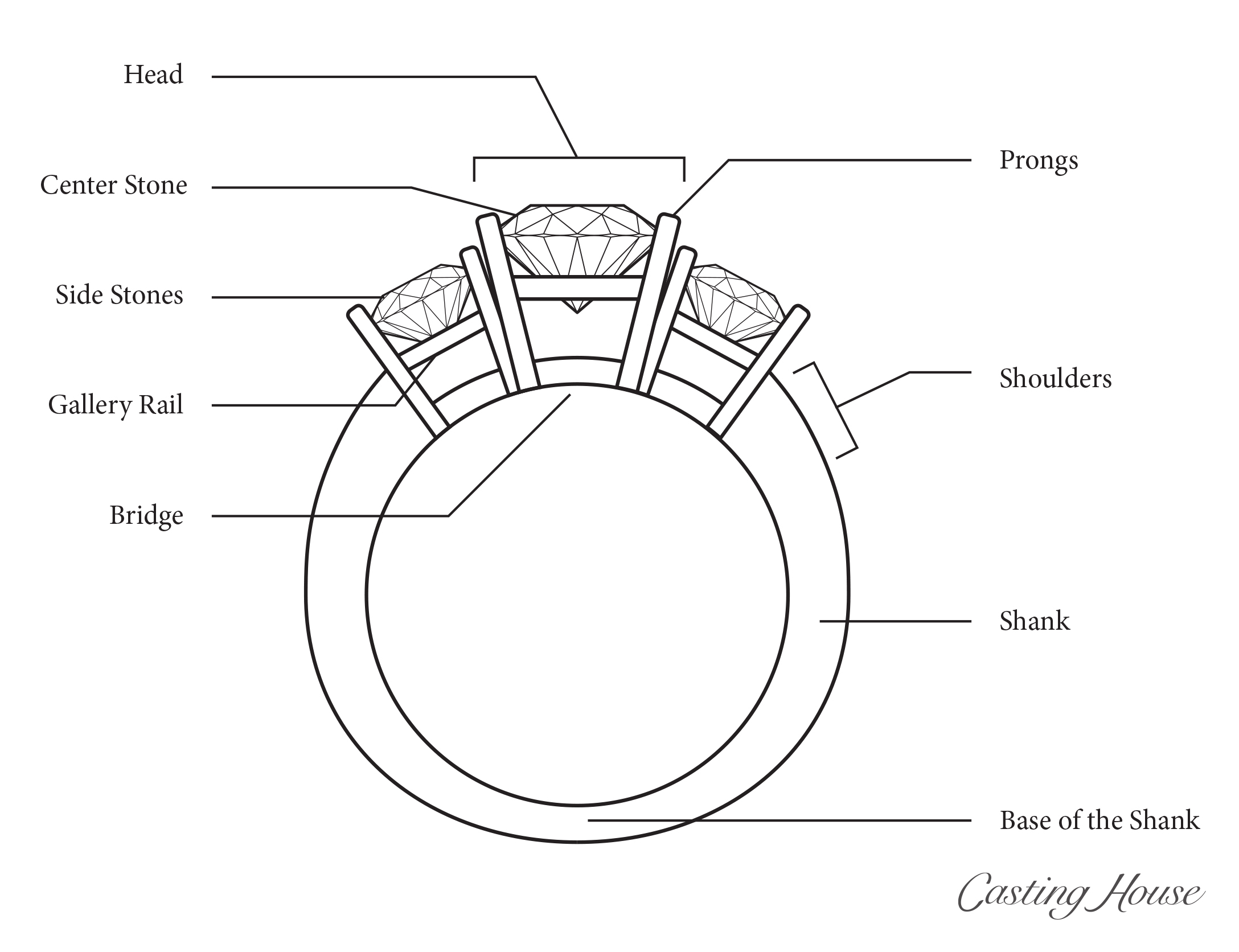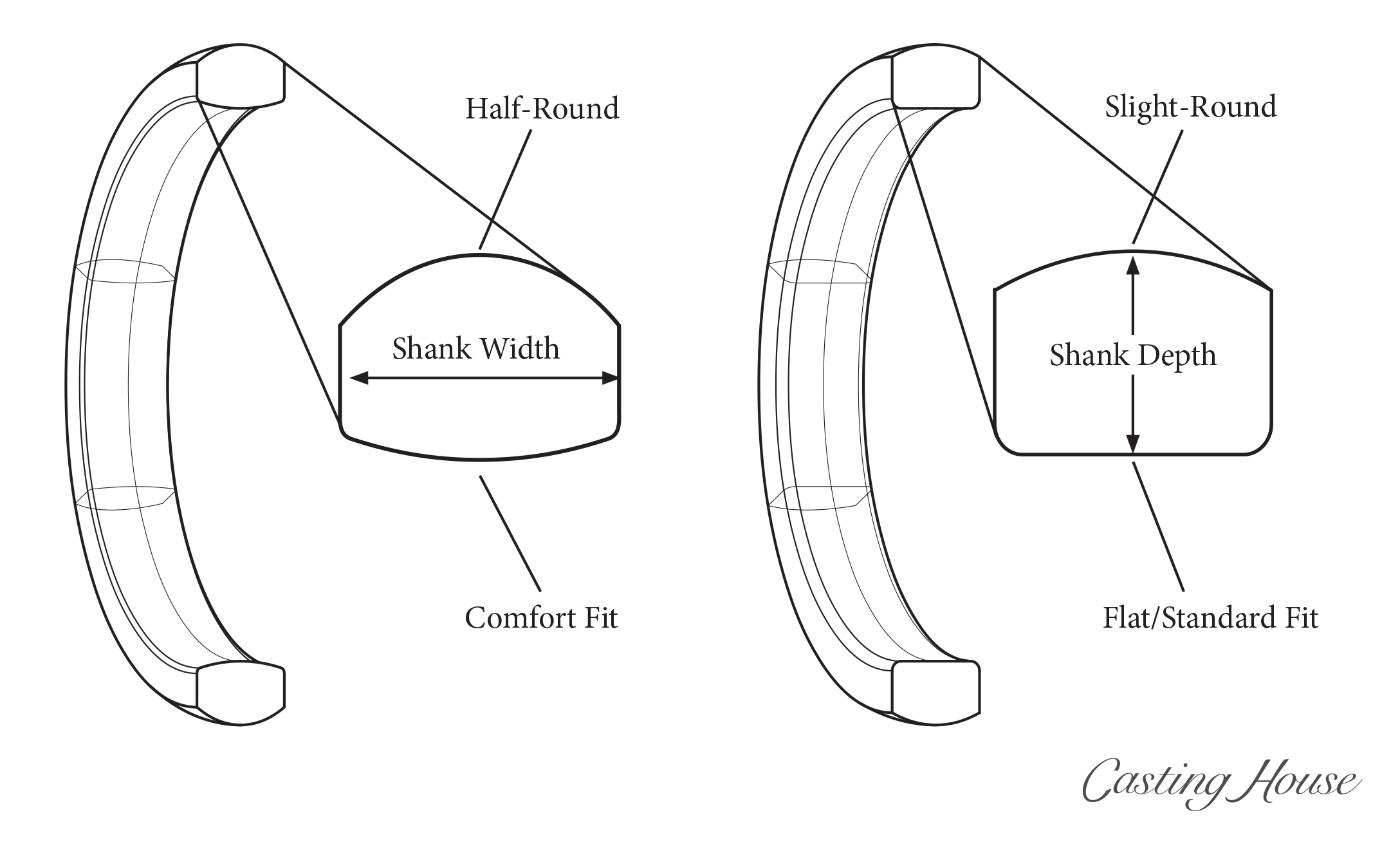Anatomy of a Ring

Looking at the ring from a side view and starting at the top, many rings feature a center stone setting held by a setting often referred to as the ‘head’ of the ring. The center stone, which could be diamonds or any other type of gemstone, may be accompanied by side stones. All are held into the setting with metal prongs that gently yet securely hold precious diamonds and gemstones. There are various types of prongs and other setting styles that are also used to hold stones, such as bezels (see Center Settings).
The diamonds or gemstones pictured here are set with prongs and have a gallery rail that helps keep the prongs secure, located about midway from the top of the stone to the ring rail, or bridge. The base of the shank is opposite the center stone - or head of the ring - and as the shank leads up into the top of the ring and its settings, it may change depth or width and be referred to as ‘shoulders’. Depending on the design of the ring, the shoulder area may taper, widen, split, cathedral, or take on a number of different shapes.

The ring shank will feature an outside shape or profile, which is the top of the shank, opposite the ring rail. Two popular ring profiles are half-round and slight-round. The inside of the ring along the finger is generally either designed to have a curved comfort fit or straighter flat fit, also known as a standard fit.
When working with your Casting House representative, be sure to discuss the desired shank depth and width as well as the profile and inside fit.


